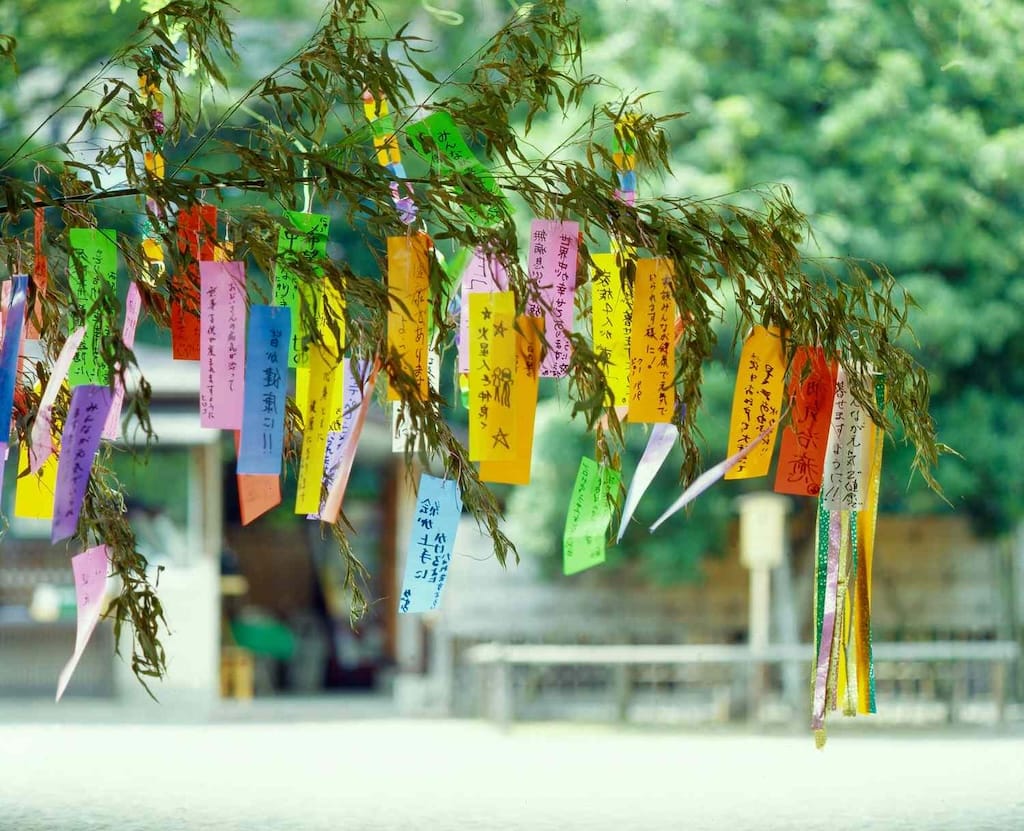
Tanabata Festival: Celebrating the Stars in Japan
The Tanabata Festival, or Star Festival, is one of the traditional festivals celebrated in Japan. It is based on the legend of two star-crossed lovers: Orihime and Hikoboshi. During the festive periods of this festival, colorful decorations and traditional customs fill the air, making it a national highlight of great importance.
In this article, we will learn about the history of Tanabata, what people usually do on the eve of the festival, its traditional customs, and other interesting facts that make it an enchanting celebration.
History of the Event
Tanabata is based on an ancient Chinese legend about two star-crossed lovers, Orihime, the Weaving Princess, and Hikoboshi, the Cowherd. According to the legend, Orihime and Hikoboshi were separated by the Milky Way and are allowed to meet only once a year, on the seventh day of the seventh month. The story was introduced to Japan during the Heian period (794-1185) and gradually fused with native Japanese traditions to evolve into the present Tanabata Festival.
Originally, this festival was held only at the imperial court but gradually came to be observed among the general population. By the Edo Period (1603-1868), Tanabata had become very popular, and different parts of Japan developed their styles of celebrating this event.


What People Typically Do
Writing Wishes on Tanzaku Papers
One of the most indispensable customs of Tanabata is writing wishes on strips of colored paper called tanzaku. After writing the wish, tanzaku papers are hung on bamboo branches in the hope that the wish will come true. Bamboo trees decorated with multicolored tanzaku create a lively and festive atmosphere.
Tanabata Decorations
Another important aspect of the festival is the decorations. Most streets, parks, and shopping areas are adorned with large, colorful streamers and paper lanterns. The most popular places for Tanabata festivals include Sendai and Hiratsuka, which are festooned with elaborate decorations that attract thousands of visitors annually.
Traditional Dances and Performances
The Tanabata Festival features traditional dances and performances. In different regions, various types of dances are performed in colorful costumes. These performances are usually accompanied by traditional music, adding to the lively and festive atmosphere. Visitors can admire these cultural displays and appreciate the rich heritage of Japan.
Festival Food and Games
No festival is complete without delicious foods and fun games, and Tanabata is no exception. Streets are lined with food stalls, known as yatai, serving all sorts of traditional Japanese festival foods, such as takoyaki (octopus balls) and yakisoba (fried noodles), along with shaved ice. Visitors can also try their hand at ring-toss games, goldfish-scooping, and shooting galleries, making it a lively event for children and adults alike.
Traditional Customs
Bamboo and Paper Decorations
The decorations seen in the streets during Tanabata are made with bamboo and paper. Besides tanzaku, origami cranes, streamers, and paper kimono are also hung on bamboo branches. Each type of decoration has specific meanings, such as good health, long life, and success in studies.
Rituals and Offerings
Various rituals and offerings are held during Tanabata to honor the deities and ensure good fortune. Traditional offerings include seasonal fruits, vegetables, and sake, placed at altars or shrines dedicated to Orihime and Hikoboshi. Some communities also hold ceremonial events where participants dress in traditional attire and offer prayers.
Community Involvement
Tanabata is a community-oriented festival where locals actively get involved in preparations and celebrations. Schools, businesses, and neighborhood associations often collaborate to create stunning decorations and organize events. This sense of community involvement adds to the festive spirit and strengthens social bonds.


Fun Facts
- Tanabata is celebrated on different dates depending on the region; some areas observe it on July 7th of the Gregorian calendar, while others stick to the lunar calendar and celebrate in early August.
- The Sendai Tanabata Festival is one of the most highly regarded Tanabata festivals in Japan, attracting over two million visitors each year with its brilliant decorations and essential events.
- In addition to Japan, countries with large Japanese communities, such as Brazil and the United States, also celebrate festivals around Tanabata.
Tips for Visitors
Plan Ahead
Visiting Japan during Tanabata is a wonderful idea, but it's wise to plan ahead. The dates of the festival may vary by region, so check those in advance. Also, make reservations for accommodations and transportation early to ensure a hassle-free trip.
Dress Comfortably
People generally wear traditional summer clothing at the festivals, such as yukata, which are light cotton kimonos. Wearing comfortable clothes and shoes will make it easier to walk around the crowded streets and fully enjoy the festival entertainment.
Respect Local Customs
Always be respectful of local customs and traditions when participating in the festival. Follow the rules for writing wishes on tanzaku and hanging them on bamboo branches. Show appreciation for the cultural performances and decorations by treating them with care and respect.
Conclusion
The Tanabata Festival is a magical celebration that intertwines mythology, culture, and community spirit. With its rich history, colorful decorations, and festive activities, Tanabata offers an unforgettable experience.
Writing wishes on tanzaku, admiring beautiful decorations, and watching traditional performances capture the very essence of Japanese culture. Plan your visit, join in the festivities, and let the spirit of Tanabata inspire you.